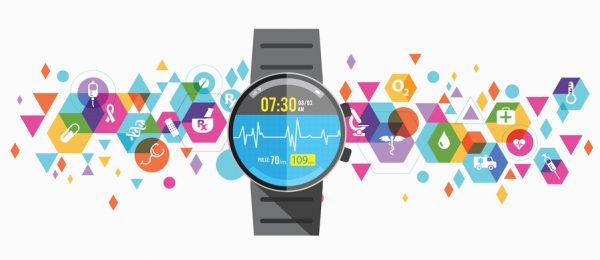
Remote patient monitoring (RPM) is changing how healthcare providers support patients outside the hospital. From monitoring irregular heartbeats and tracking symptoms to preventing readmissions and managing chemotherapy side effects, wearable devices enable providers to closely watch patients who might otherwise be at risk of sudden complications.
For example, cancer patients receiving chemotherapy or CAR T-cell therapy face potential serious side effects, like infections or inflammation, that show up without warning. With RPM, providers can catch early signs of trouble — like a fever or irregular heart rate — before they escalate, potentially preventing a hospital stay and giving patients peace of mind as they recover at home.
This ability to closely monitor patients remotely is redefining the standard of care, especially for those managing complex health conditions. RPM technology provides timely insights that allow healthcare teams to intervene early, improve patient outcomes, and reduce the burden on hospital resources. As RPM becomes more integrated into patient care, it’s opening up new possibilities to better manage a range of conditions and keep patients safer and more comfortable at home.
Using RPM to detect neutropenic fever early
Each year, approximately one in 29 chemotherapy patients are hospitalized due to neutropenic fever — a common and serious complication that accounts for over 8% of all cancer-related hospitalization costs. Hospital stays for neutropenic fever average 9.6 days for adults, costing around $24,770 per stay, while pediatric stays average 8.5 days, at an estimated $26,000.
Traditionally, patients monitored neutropenic fever by periodically checking their temperature and reporting symptoms. This method, however, has limitations: patients may not consistently report their symptoms, and spot-checks can delay the detection of time-sensitive issues.
RPM devices offer a significant improvement over traditional monitoring. With Bluetooth-enabled medical wearables, patients can simply wear the device, and their vitals are continuously transmitted to secure remote servers. This stream of real-time data gives providers early insight into changes in a patient’s condition — allowing them to detect the onset of neutropenic fever and intervene before complications escalate.

NEMT Partner Guide: Why Payers and Providers Should Choose MediDrive’s TMS
Alan Murray on improving access for medical transportation.
Neutropenic fever can develop suddenly and often without obvious symptoms, especially while a patient is asleep. Undetected, neutropenic fever can quickly lead to sepsis — a life-threatening infection. For patients with weakened immune systems or undergoing chemotherapy, continuous monitoring is an essential tool in catching potential problems early. The devices offer a more reliable way to spot issues as they arise. By collecting data more frequently than occasional temperature checks, providers gain a better understanding of a patient’s health, enabling more accurate and timely treatment.
A new approach to monitoring and managing patient care
The impact of RPM is becoming increasingly clear in how healthcare providers manage patient care. A recent survey revealed that more than 80% are now using the technology — a significant increase from just 20% in 2021. The survey also found that over 32% of healthcare providers use RPM for post-chemotherapy monitoring, while more than half rely on it to prevent rehospitalization.
In an ongoing study, 80 cancer patients undergoing outpatient chemotherapy are using RPM to monitor for neutropenic fever. During the first three months of treatment, study participants wear a continuous temperature monitor — a clinical-grade wearable thermometer that automatically checks body temperature every 10 minutes.
The study focuses on patients with breast cancer, colon cancer, lung cancer, and non-Hodgkin lymphoma, all of whom are receiving various chemotherapy treatments. When the sensors detect a fever, they immediately send real-time alerts to both the patient and their oncologist.
The study’s findings could have a significant impact on how chemotherapy patients are monitored for neutropenic fever in the future. As the use of this technology expands, it could become a standard part of outpatient chemotherapy care — leading to quicker interventions and fewer hospitalizations.
Early symptom detection in CRS management
Continuous monitoring has also proven invaluable in addressing CRS. This condition arises as an immune response to treatments like immunotherapy or CAR T-cell therapy, causing the release of excessive cytokines into the bloodstream. The rapid increase in cytokines can trigger severe symptoms, such as fever, low blood pressure, and organ dysfunction, which can become life-threatening if not addressed quickly.
With continuous monitoring, however, healthcare providers can closely observe vital signs and cytokine levels in real time. Early detection of CRS allows medical teams to take swift action, including administering immunosuppressive therapies, to mitigate the effects and prevent complications.
In a recent study, patients undergoing CAR T-cell therapy for relapsed multiple myeloma wore wearable devices from the moment of their infusion until discharge. The study explored whether these devices could help detect CRS early by tracking vital signs like temperature, pulse rate, respiratory rate, and oxygen levels. Initial results suggest that wearable devices are effective in monitoring CRS immediately following treatment, potentially enabling earlier detection and intervention.
Unlocking a comprehensive approach to enhancing healthcare
The progress made with continuous monitoring has already transformed the way we manage conditions like neutropenic fever and CRS. However, RPM’s potential goes beyond these applications, and we’re just scratching the surface of what’s possible.
As healthcare providers continue to invest in this technology, the focus will be on finding solutions that can address multiple conditions. This reduces the need for separate systems for each disease, enhances workflows, optimizes resources, and improves efficiency across the board.
Leveraging real-time data and continuous monitoring equips providers with the tools they need to offer more proactive and patient-centered care. As the technology becomes more integrated into care plans, it has the potential to reshape healthcare delivery and improve both outcomes and patient experiences.
Photo: exdez, Getty Images
Jiang Li, Ph.D., is founder and CEO of Vivalink, Inc., a Silicon Valley company developing digital health technology solutions for remote patient monitoring in healthcare and clinical research. Prior to Vivalink, Jiang held positions as VP of Engineering at Thin Film Electronics, Kovio, and Spansion, as well as the Director of Product Engineering at Advanced Micro Devices.
Jiang earned his BS in Chemical Engineering from Zhejiang University, and his Ph.D. in Chemical Engineering from the University of Wisconsin at Madison, in 1998.
This post appears through the MedCity Influencers program. Anyone can publish their perspective on business and innovation in healthcare on MedCity News through MedCity Influencers. Click here to find out how.









